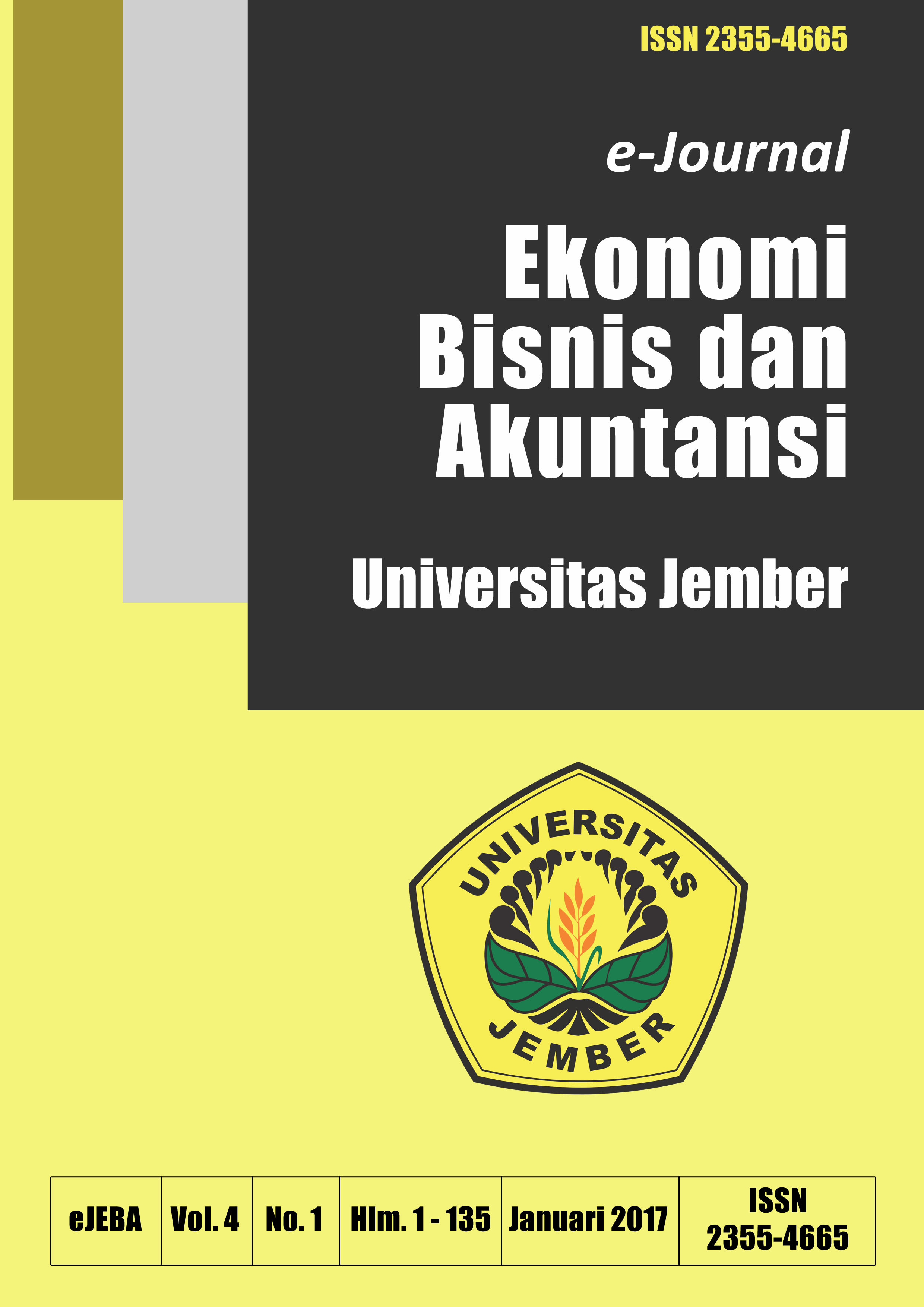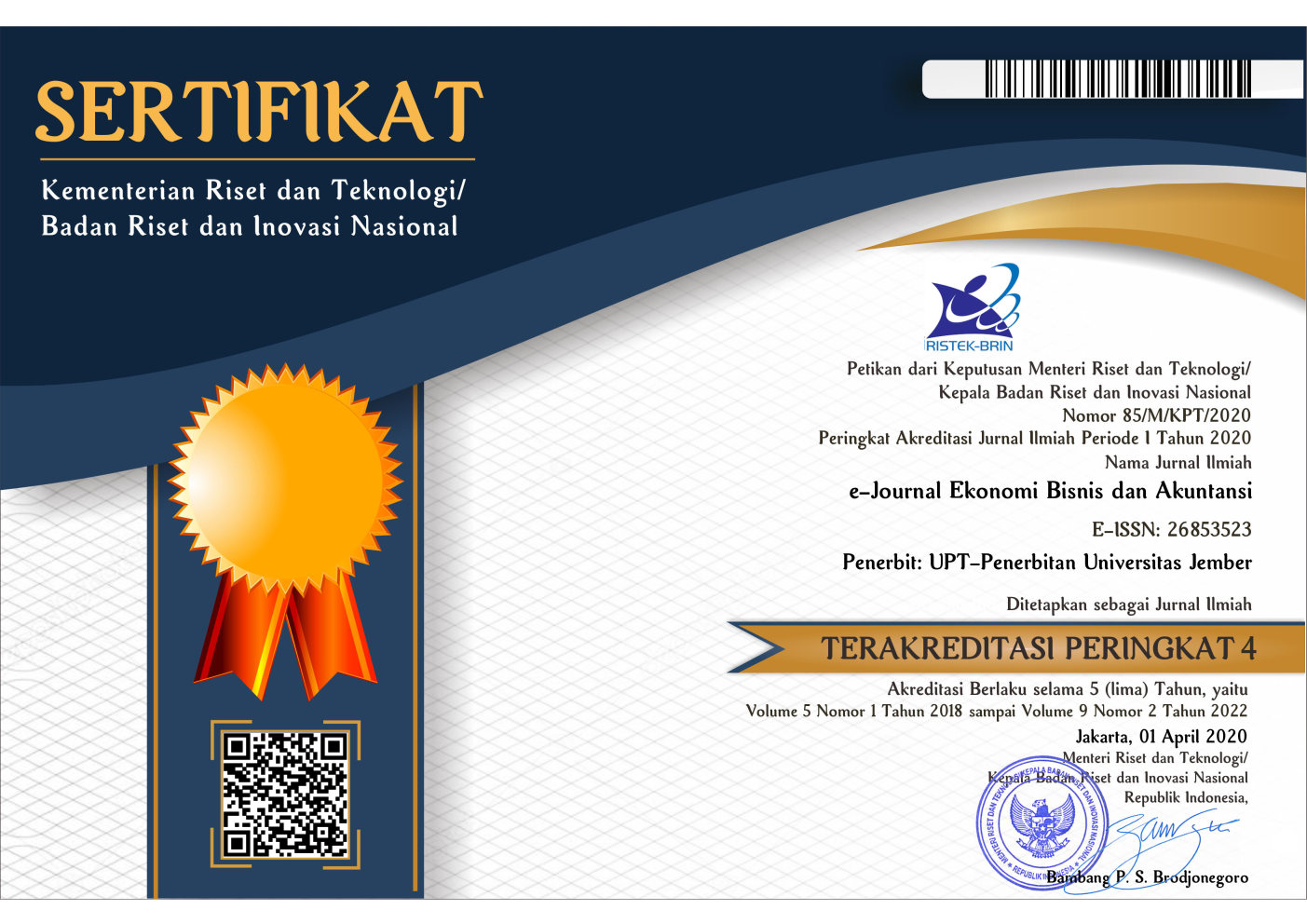Analisis Minat Penggunaan Mobile Banking Dengan Pendekatan Technology Acceptance Model (TAM) Yang Telah Dimodifikasi
Abstract
This study aimed to analyze the factors that may affect students' perceptions about the intention to use mobile banking
applications to support their daily activities. The research model was developed using a Technology Acceptance Model
developed by Davis (1989), and by including three external variables that experience, complexity, and gander. The research
model empirically tested using data from a survey of students at the University of Jember. The sampling method in this study
using a clustered random sampling. The questionnaire of 120 students who receive offers mobile banking service that qualifies
as a sample analyzed using Structural Equation Modelling (SEM) using AMOS 22.0. The results showed that all constructs in
the original TAM model was statistically significant. On the other hand, gender as external variables in this study had no effect
on perceived usefulness and perceived ease of use. The implications of this study are relevant for students who are interested in
using mobile banking in order to better take into account the experience and ease of use. Mobile banking users is expected to
be more confident with using mobile banking can simplify their banking activity.

















